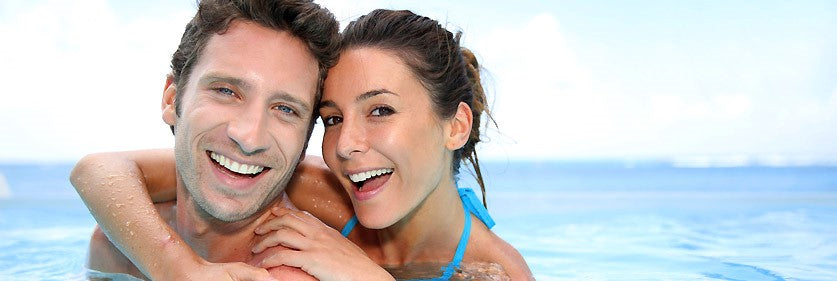
UV-C light against algae in the pool: environmentally friendly pool care
|
|
Time to read 3 min
|
|
Time to read 3 min
Algae in the pool are a common problem that many pool owners experience. Despite considerable investments in pool systems and accessories, floating, thread and blue algae can occur. These are not only unsightly, but also significantly affect water quality. Algae can increase the pH value of the pool water, which can lead to corrosion of pumps and lines. But there are effective solutions to counteract this algae plague.
Algae growth in the pool can be favored by various factors. One of the main reasons is inadequate pool care, in particular insufficient filtering and disinfection. Algae growth also promotes high temperatures and sunlight because algae are photosynthetically active. An uneven or high pH value can also favor algae formation, as can the presence of nutrients in the water, which are brought in by leaves, pollen or fertilizers.
Regular and thorough pool care is crucial to prevent algae in the pool. This includes regularly checking and adapting the pH value, cleaning the filters and removing dirt and leaves from the water. Good water circulation is also important in order to distribute nutrients evenly and to avoid stagnating areas in which algae can thrive. Mechanical pool cleaners can be supportive by keeping the floor and walls of the pool clean.
The use of disinfectants is often required for clear pool water. Chemical methods, especially chlorination, are widespread. Chlorine disinfects the water by killing microorganisms, including algae. However, Chlor can increase the pH value, which in turn makes the use of pH skirts necessary. This chemical balance must be carefully monitored to avoid skin and eye irritation.
Flock are often used in connection with chlorine to bind and remove the finest floating. However, these chemicals also have disadvantages: they can make the water aggressive and require careful handling. They are also harmful to the environment because the water has to be disposed of as a special waste after treatment and cannot be used for irrigation.
An environmentally friendly alternative to chemical disinfection is the treatment of the pool water UV-C light . This physical method uses a UV-C system that is installed between the filter and the water cycle of the pool. The UV-C light destroys the DNA of the algae cells, which means that they become inactive and cannot multiply.
In order to permanently prevent algae in the pool, a combination of preventive measures and regular care is necessary. Here are some proven tips:
Every pool owner dreams of a crystal -clear, algae -free pool that represents an optical highlight in the garden and invites you to swim. With the right combination of physical and chemical methods, careful maintenance and the use of environmentally friendly disinfection technologies such as UV-C light, this dream can become a reality.
Algae in the pool are an avoidable problem if you do the right care and maintenance. By combining modern technology and proven methods, water quality can be improved sustainably. UV-C disinfection offers an environmentally friendly and safe alternative to chemical disinfection methods and helps to keep the pool clear and algae-free. So you can enjoy the summer in the crystal -clear pool without having to worry about algae growth and water quality.